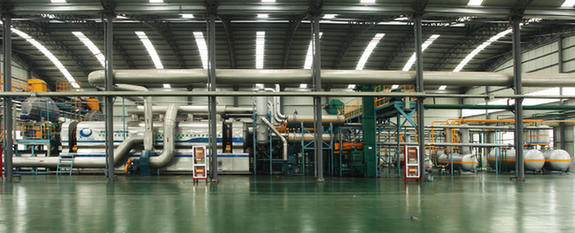Bright Prospects for China-South Korea FTA
During FTA negotiations the two sides have also given full consideration to respectively sensitive fields, namely, South Korea’s agriculture and China’s electronics and machinery, so accumulating valuable experience for forthcoming negotiations.
Having transformed itself into a super free trade center, concluding the bilateral FTA will greatly expand South Korea’s global economic involvement. FTAs between South Korea and the U.S., EU, ASEAN, and India have raised their combined GDP to 60 percent of the world total. The FTA with China will expand this global proportion of South Korea and its free trade partners to 70 percent.
Political Games
Competition and cooperation coexist in the planning and negotiation of the China-South Korea free trade area and of the China-Japan-South Korea free trade area. They embody a contest of the three countries’ economic and political strength.
The idea of a China-Japan-South Korea free trade area was raised before that of the China-South Korea FTA. The three countries’ leaders first addressed the concept at a summit in 2002.
Relevant institutions of the three countries have conducted intensive studies on the potential economic gains of the trilateral free trade area. A research team under their joint guidance conducted in 2003 a survey of the three countries’ listed companies and some of their enterprises. The results showed that 85.4 percent of Chinese companies, 78.7 percent of Japanese firms, and 70.9 percent of South Korean businesses had a positive attitude towards establishing the trilateral free trade area.
The three countries command an extraordinarily large market of more than 1.5 billion consumers, the trilateral trade volume having topped US $690 billion in 2011, according to the China-Japan-ROK Cooperation (1999-2012) white paper released by China’s Ministry of Foreign Affairs. Moreover, China has been Japan and the ROK’s largest trading partner for years. Globally, the three countries’ GDP accounts for 75 percent of East Asian GDP and 19.6 percent of global GDP; their trade volume is a global third after the EU and the U.S. A study by Japan’s Mitsubishi Research predicts that the establishment of a trilateral free trade area will increase China’s GDP by 1.63 percent; that of Japan by 0.23 percent; and South Korea’s by 1.84 percent.
At the fifth China-Japan-South Korea trilateral summit in May 2012, leaders of the three countries agreed to initiate negotiations on the trilateral free trade area, and signed an agreement on promoting, facilitating, and protecting investment. In November of the same year at the ASEAN summit, the three countries announced that they would commence FTA negotiations.
Japan originally planned to start negotiations for a Japan-ROK FTA which China would join at a later, more appropriate time. However, China and South Korea started their bilateral FTA negotiations beforehand, so putting Japan at a disadvantage as regards the trilateral FTA negotiations.
Several factors account for this situation. The first is rivalry between China and Japan for the dominant role in the process of East Asia’s economic integration. The two sides have treated FTA negotiations as another arena in which to vie for political strength. China gained a high reputation for its excellent handling of the 1998 Asian financial crisis, which was what triggered East Asia’s economic integration process. During the first decade of the new millennium, Japan’s stagnancy and China’s rapid development were East Asia’s most striking features. This instilled in Japan a sense of crisis. After China signed the FTA with ASEAN, Japan hastened to sign an FTA with ASEAN countries. In advancing the establishment of the China-Japan-South Korean free trade area, Japan displayed irrational hesitation due to a fear of losing its dominant role in the process.
The second factor is that of the disputes over China’s Diaoyu Islands and fermentation of other historical issues. This has disrupted China-Japan relations, so casting a shadow on trilateral FTA negotiations.
In addition, the U.S. is promoting the Trans-Pacific Partnership Agreement (TPP), driven by its strategy of returning to the Asia-Pacific region. This is another reason for postponement of the China-Japan-ROK FTA talks. Japan formally joined the TPP negotiations in July 2013, so becoming the main force blocking China economically. Under this backdrop, it is highly unlikely that Japan will proactively advance the trilateral FTA negotiations.
Lastly, its imbalanced trade makes Japan even more cautious about establishing the trilateral free trade area. In 2011, Japan showed its first trade deficit in 31 years, that to China standing at US $21.7 billion. This makes China’s open market an especially sensitive issue for Japan.
However, were the China-South Korea free trade area to be set up, Japan’s US $5.3 billion in exports to China would be replaced by those from South Korea. This should motivate Japan to start FTA talks with China. In the long term, establishment of the China-South Korea free trade area will speed up negotiations on the China-Japan-South Korea FTA. In the short term, however, due to tense China-Japan relations, even though Japan begrudges China and South Korea’s reaching an FTA, it might nonetheless sustain suspension of the trilateral FTA talks.

